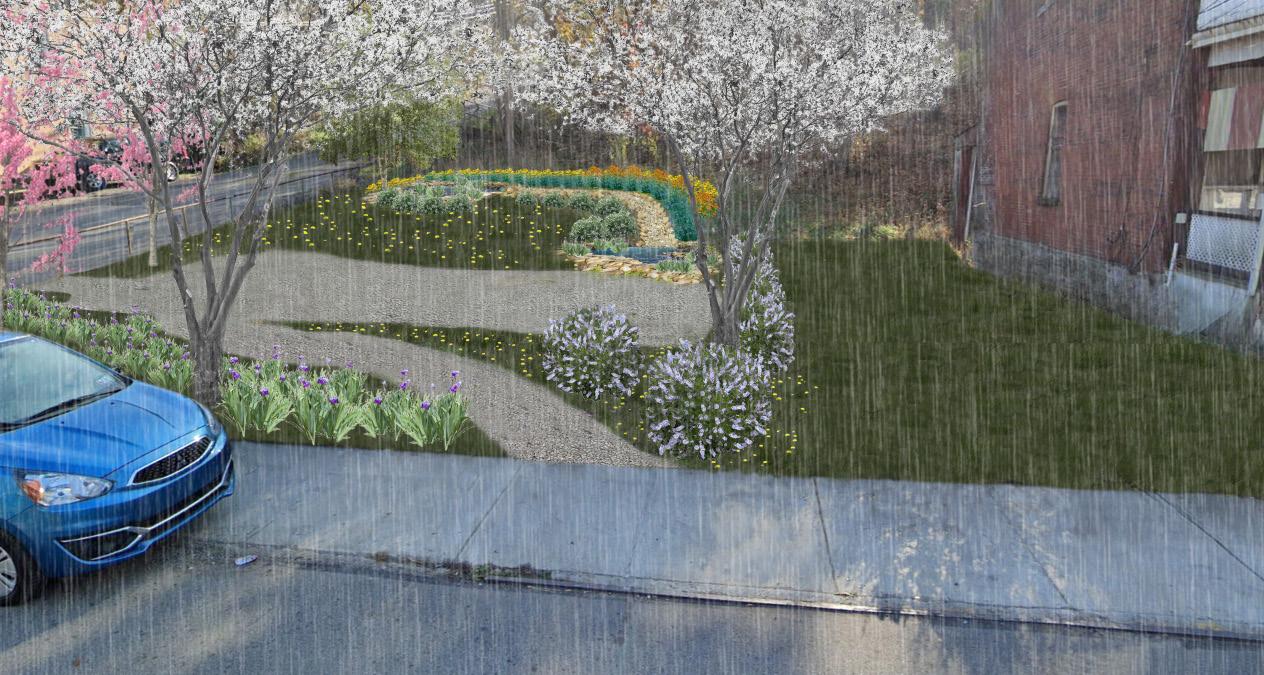
1 minute read
Dornbush GSI Project
written by Jan Raether
Pittsburgh is home to some of the world’s steepest streets. If you are a cyclist you may be familiar with some of them through the annual Dirty Dozen bike race, which includes Canton Avenue, a street often regarded as one of the five steepest streets in the world. Dornbush Street in Pittsburgh’s East Hills neighborhood is notably left out of the Dirty Dozen, but comes in as high as 13th steepest in the world on some lists.
Advertisement
We have all experienced how water moves across our hilly landscape, running along curbs, spilling over sidewalks, and ponding in low-lying areas. Dornbush is no exception to this process. If you take a walk down Dornbush Street (because who wants to walk up it), you will frequently see streaks of sediment, overflowing catch basins, leafy debris and other signs of significant water volume and velocity. Unfortunately, the bottom of Dornbush Street, where it intersects with Bricelyn Street, is usually akin to a full bathtub. Look in any direction from that intersection and you’ll see that you are sitting in a basin just waiting to fill with water and all the debris that comes with it.
While we frequently look at the pollution impacts of stormwater, we also need to consider volume, which can cause more immediate risks to life and health. Over the last three years we have studied Dornbush Street and developed plans that will hopefully remove some of the volume from the “bathtub”, decreasing the impact of rain events, large and small, for the surrounding community, and increasing their resiliency to large storms.
With funding from the Department of Environmental Protection’s Growing Greener Grant Program we will be able to construct Green Stormwater Infrastructure on two vacant lots at the intersection of Dornbush and Bricelyn Streets. Water will be captured in curbside catch basins up slope and diverted into a rain garden, with overflow capacity linked in by a small channel into subsurface storage. Working with community members, we’ve also been able to think of ways to make the lot more of a neighborhood asset, with plans to include a short path, a flat area for community amenities, and the potential for the addition of public artwork in the future. Our communal vision for the space is one that delivers on making the block more resilient to climate change and more purposeful for its residents.








